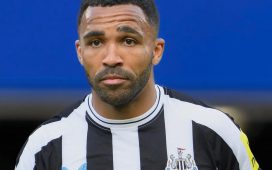In November 2010, Fabio Capello gave Jordan Henderson his England debut in a friendly against France, operating alongside Gareth Barry at the back of midfield in a 4-2-3-1. In the second half, after Barry had been replaced by Adam Johnson, Steven Gerrard dropped in alongside him. It did not go well. Henderson didn’t start another game for England until a friendly against Denmark in March 2014.
But then why would it have gone well? Henderson was not a holding midfielder, even before you begin to consider the nightmarish difficulty of trying to play as a holding midfielder alongside Gerrard. Not for the first time people at Sunderland wondered whether Capello ever bothered to watch them play. One of the reasons Darren Bent left, two months after Henderson’s international debut, was that he felt his chances of England recognition would be greater if he played somewhere, anywhere, else.
How could anybody who had watched Henderson regularly, anybody who had seen his energy and stamina and desire, his ability to cross a ball with his right foot, think he was best deployed sitting in front of the back four? He had played on the right for Sunderland as he emerged from the youth system before Steve Bruce had moved him into the centre, but it had always been somewhere where he could run. He was like a setter: if he wasn’t running, running anywhere, lolloping about with ears flapping just for the sheer joy of it, he wasn’t happy.
It was an issue that followed Henderson to Liverpool even after he had overcome Brendan Rodgers’s initial intention to sell him. Even after Jürgen Klopp had taken over Henderson always seemed the misfit, the one most likely to be replaced. He just didn’t seem to have the tactical discipline to operate as the deepest of the midfield three. His – and Liverpool’s – real breakthrough last season came after Fabinho had taken that deep-lying midfielder role and Henderson had been shifted to a freer role on the right of the triangle. Hendo Unchained turned successive games against Southampton, Porto and Chelsea last season.
The narrative had him returning to his rightful position to discover his destiny, leading to the emotional celebrations with his father after lifting the Champions League and the development of his trademark trophy lift – and who from Sunderland has ever needed one of those before? (The narrative may also note Liverpool’s indebtedness to a small area to the south of Sunderland: Henderson grew up in Herrington, a couple of miles east of Penshaw, home of Alan Kennedy, the left-back who scored decisive strikes in two European Cup finals for them. Bob Paisley, who won six league titles and three European Cups as Liverpool manager to go with the championship he won as a left-half, came from Hetton-le-Hole, about four miles to the south.)

But what happens after the grand finale? Madrid in June could easily have been Henderson’s finest hour. What else did he have to prove? Realistically, nothing. There was a league to win after 30 years, and Liverpool surely now will do that, but that was a collective ambition. Henderson himself had done everything that had been hoped for him and more. The ugly duckling, a player whose curious gait had led to him being written off by Alex Ferguson, had become a swan.
Except there was a niggle. He wanted to be a swan – an ungainly swan, it’s true, one whose paddling is very definitely visible above the water – who could play as a holding midfielder. Fabinho’s injury in November was one of those moments that could have derailed the season. Henderson stepped in. His greatest quality, perhaps, has always been his willingness to learn. Those who saw his uncertain first game in central midfield for Sunderland, away at Birmingham, doubted he would ever make it in the middle; within a matter of weeks he was undroppable.
In four league games with the 29-year-old at the back of midfield over the past month Liverpool have conceded one goal. Three of their five league clean sheets this season have come in that spell. He played as the holder as Liverpool beat Flamengo in the Club World Cup final.
Against Leicester on Thursday, although it was Trent Alexander‑Arnold who stood out with his goal and a part in the other three goals, Henderson was just as vital to the win. There was all the familiar energy, three tackles and an interception.

But what was notable about Liverpool was the way, after that frenetic opening 10 minutes or so when both sides looked vulnerable on the counter, that they took control of the game, pressing high and holding possession. Nobody who started the game finished with a higher pass completion rate than Henderson’s 93.4%, a stat that includes a remarkable 10 accurate long balls out of 11 attempted. He is not Xavi or Andrea Pirlo, and never will be, but at the King Power Stadium he had more in common with them than might ever have been expected.
Capello got it wrong nine years ago but Henderson is becoming the player he wanted him to be. Other midfielders have proved unable to change but Henderson is always developing, always improving.














